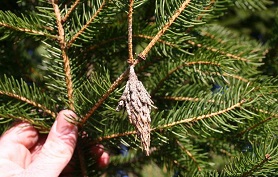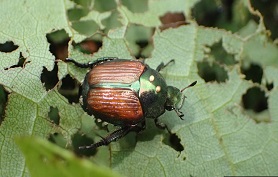Insects
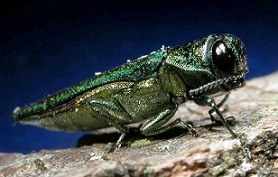
Emerald Ash Borer
The Emerald Ash Borer (Agrilus planipennis or EAB) is responsible for the destruction of tens of millions of ash trees in 30 states. Native to Asia, it likely arrived in the United States hidden in wood packing materials. The first U.S. identification of Emerald Ash Borer was in southeastern Michigan in 2002 and has been in our local area since 2012. There are a variety of treatment options that can serve as a control measure for the EAB.
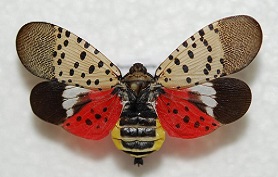
Spotted Lantern Fly
The spotted lanternfly (Lycorma delicatula) is an invasive plant hopper that is native to China and likely arrived in North America hidden on goods imported from Asia. Juvenile spotted lanternflies, known as nymphs, and adults prefer to feed on the invasive tree of heaven (Ailanthus altissima) but also feed on a wide range of crops and plants, including grapes, apples, hops, walnuts and hardwood trees. The insects suck sap from stems and branches which can weaken and damage the plant. This feeding also leaves behind a sticky, sugary residue called honeydew that attracts other insects and promotes the growth of sooty mold, which can further damage the plant.
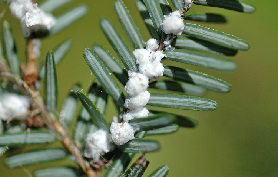
Hemlock Wooly Adelgid
Native to Asia, the hemlock woolly adelgid, or HWA, is an invasive, aphid-like insect that attacks North American hemlocks. HWA are very small (1.5 mm) and often hard to see, but they can be easily identified by the white woolly masses they form on the underside of branches at the base of the needles.
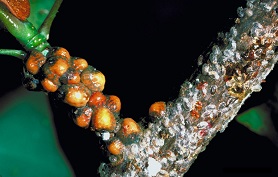
Scale Insects
Scale insects feed on leaves or branches of many ornamental plants grown in landscapes and nurseries. They attach themselves to a plant and feed by sucking fluids through straw-like mouthparts. Although many scale species from many families can be pests of ornamental plants the primary families are armored scales and soft scales.

